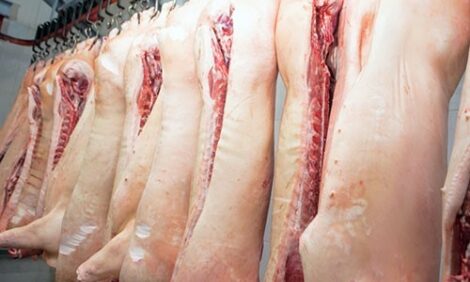



Survey Shows Few Sows in Open Housing
US - Results of a survey issued at the World Pork Expo, the annual trade show of the National Pork Producers Council, show that the overwhelming majority of the US sow herd spends some time in individual housing, known as gestation stalls. The findings confirm NPPC’s concerns about recent pronouncements by food companies that they will use only pork from operations that are gestation-stall free.The survey, conducted by University of Missouri extension economist Ron Plain, found that currently only 17.3 per cent of sows spend a portion of gestation in open pens. Plain surveyed pork operations with 1,000 or more sows. He received responses from 70 operations, which combined own about 3.6 million of the nation’s 5.7 million sows.
“Today’s survey shows that these food companies obviously haven’t thought through the complexities, logistics or implications of their requests,“ said NPPC President R.C. Hunt. “Simply making an announcement without understanding the entire supply chain’s ability to meet these requests or the challenges involved is utterly befuddling. We feel it is important to have this first-hand information available to our customers.“
The Plain survey found that 20.2 per cent of sows on operations of 1,000-9,999 sows, 18.9 per cent on operations of 10,000-99,999 and 16.4 per cent on operations of more than 100,000 are in open pens for some portion of gestation. When asked about plans to put more sows in open pens, the largest operations indicated that 23.8 per cent of their sows would be in them in two years, operations of 10,000-99,999 sows would have 21.3 of their pigs in such pens and operations of 1,000-9,999 would have 20.7 percent.
But it is important to note, said NPPC, that an operation may use both individual and open pen, or group, housing and that sows on some operations may spend time in both systems.
“Given that few sows always are in open housing and that producers may use both individual and group housing, it would be extremely difficult and costly for the pork supply chain to sort, segregate and trace product to meet the requirements of these food companies,“ Mr Hunt said.
“Regardless, this issue is about giving animals the best care possible, and hog farmers like me know through years of experience that individual housing provides that best care.“








